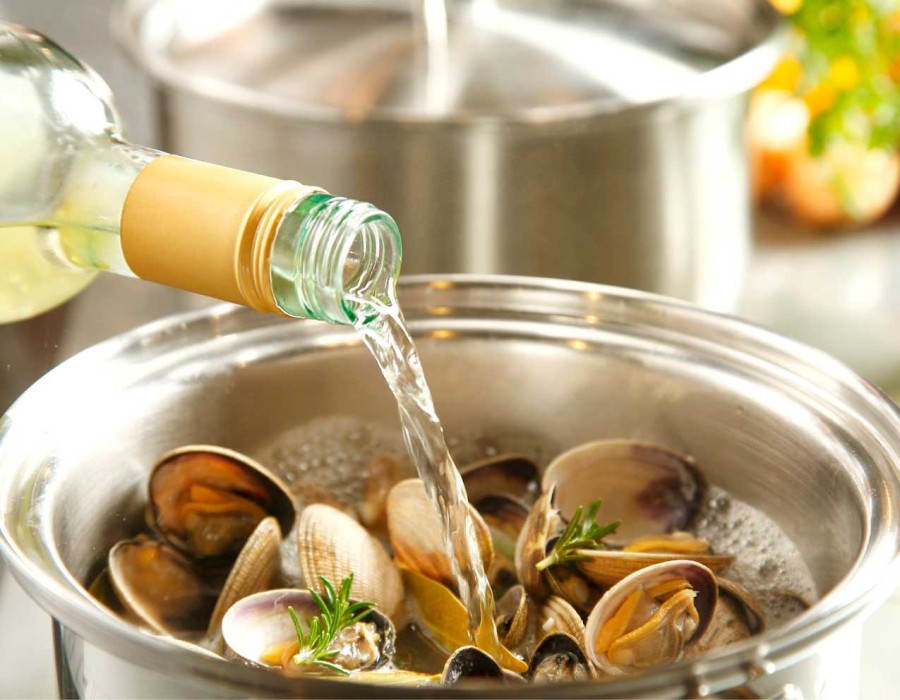Dry white wine for cooking is a kitchen staple with a versatility that can elevate countless dishes, enhancing flavors and adding a touch of sophistication. From sauces to marinades, its unique qualities make it an invaluable ingredient in many recipes.
Understanding Dry White Wine
Dry white wine, characterized by its lack of sweetness, is made from green or yellowish grapes and undergoes fermentation without added sugar. The result is a wine with crisp acidity and a clean, refreshing taste. Popular varieties include Sauvignon Blanc, Chardonnay, and Pinot Grigio. Each of these wines brings its own distinctive notes, which can subtly influence the flavor profile of your dishes.
Enhancing Flavors in Savory Dishes
One of the primary uses of dry white wine in cooking is to deglaze pans. When you sear meat or vegetables, flavorful bits often stick to the pan. Adding a splash of dry white wine helps lift these bits off the pan, creating a rich, flavorful base for sauces and gravies. The wine's acidity cuts through the richness of the meat, balancing flavors and adding depth to your dish.
In addition to deglazing, dry white wine can be used to create delicious sauces. For instance, a simple white wine reduction can be made by simmering the wine until it thickens and concentrates its flavors. This reduction can be combined with cream or butter to make a velvety sauce perfect for drizzling over chicken or seafood.
Infusing Depth into Marinades
Marinades benefit greatly from the inclusion of dry white wine. The wine's acidity helps tenderize proteins, making meat and fish more succulent. Additionally, it allows the marinade's flavors to penetrate more deeply, resulting in a more flavorful final dish. For a simple marinade, combine dry white wine with olive oil, garlic, herbs, and a touch of salt and pepper. Marinate your protein for several hours before cooking for best results.
Baking and Braising with Dry White Wine
Dry white wine is also an excellent ingredient in baking and braising. In baking, it can be used to add moisture and subtle flavor to dishes like cakes or bread. For example, a splash of white wine can enhance the flavor of a lemon cake or a savory bread.
When it comes to braising, dry white wine works wonders. It can be used as a cooking liquid for braising meats or vegetables. As the wine simmers, it melds with other ingredients, infusing the dish with a rich, complex flavor. This technique is especially effective for dishes like coq au vin blanc or braised chicken with mushrooms.
Tips for Cooking with Dry White Wine
- Choose the Right Wine: Select a dry white wine that you enjoy drinking. If it’s good enough to drink, it’s good enough to cook with. Avoid cooking wines, which often contain added salt and other preservatives.
- Use in Moderation: While dry white wine adds great flavor, it’s best used in moderation. Excessive amounts can overpower your dish.
- Pair with Complementary Flavors: Consider the flavor profile of your dish when choosing a dry white wine. For instance, a Sauvignon Blanc pairs well with herb-based dishes, while Chardonnay complements creamy sauces.
- Cook Off the Alcohol: To ensure the alcohol evaporates and leaves behind just the flavor, allow the wine to simmer or cook for a few minutes before incorporating it into your dish.
Conclusion
Dry white wine is a versatile ingredient that can significantly enhance the flavors and textures of your dishes. Whether you’re deglazing a pan, creating a sauce, or adding depth to a marinade, its crisp acidity and clean taste make it a valuable addition to your culinary repertoire. Experiment with different varieties and discover how this elegant ingredient can transform your cooking.





Comments